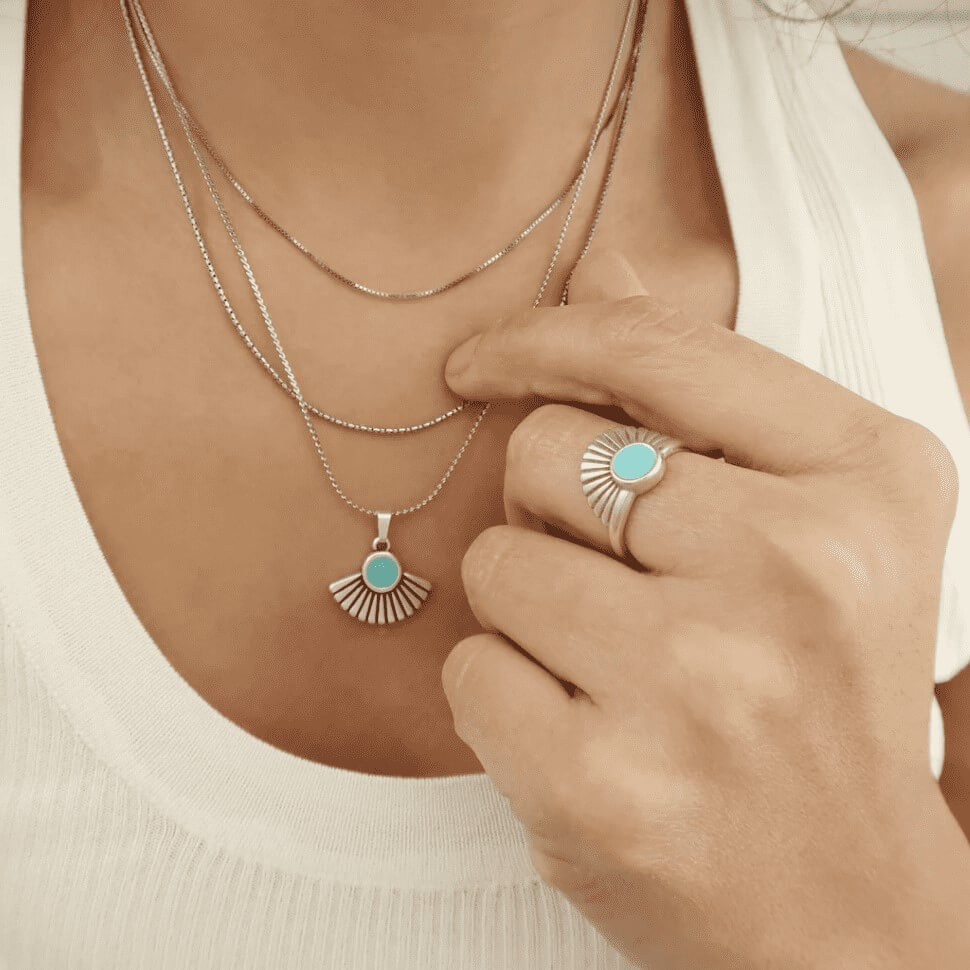Jewelry in the style of the Greeks
The history of jewelry from Greece
The experienced artisans of beauty
The Greeks of ancient Greece renounced conventional jewelry and thus became skilled craftsmen. As the Greeks were passionate admirers of the beauty of the human body, their jewelry pieces were used as a means of expression. Greek Jewelry was designed with designs of faces and bodies that were to be recognized and admired. The feeling of beauty was developed with natural science and public taste, which were imposed on the worker, even for the simplest objects that were applied to the needs of life. Art and work were inseparably connected.
The Hellenic Scene: Expression of Beauty through the Accumulation of Jewelry
Jewelry in ancient Greece served various functions: decorative; to highlight the beauty of the body, symbolic, to demonstrate status through the amulet, useful, as a prize, as an offering to the gods, in mourning garments or for rituals. In what corresponds to female jewelry, it was often found in the usual extent. Halsketten, Ohrringe, Armbänder und rings from Greece used; during ceremonies, chains or belts were attached under the bust. For men, it was common to wear a signet ring, a bracelet, and sometimes special headbands. The most symbolic and representative period was the Hellenistic (400 BC to 300 BC) or the Greek Baroque era. It is characterized by theatricality, exaggeration, and excess, and became the stage for the globalization of Greek art. The term "Hellenistic" derives from the name of the cultural region: Hélade, which expresses itself in Ancient Greek as "group of women."
Wearing silver rings and gold rings
At this time, the trend is to wear accumulated and even heavy jewelry to express one's beauty. Women, for example, mixed and collected several necklaces at the same time, even between silver and gold. Hands were perceived as very attractive body areas, wearing many bracelets at once and heavy bangles.
Jewelry from Greece
The in Greek jewelry The used symbolism was animal and plant-based. From the animal world, there were the heads of lions, bulls, and rams; and from the plant world, the rosettes, flower petals, and laurel leaves, oak, and ivy.

Underline your own style with the Ringe aus Griechenland
Lily blossom pendant, earrings and rings
The lily is a symbol of power, sovereignty, honor, and loyalty. From ancient Greece (where it was drops of milk that fell from the sky while the goddess Hera, the wife of Zeus, nursed her son) to the Roman Empire (for those who accompanied Iris, the goddess of the rainbow, to transport the souls of women to the underworld) through Mesopotamia (for which it was the sacred flower) or Jewish culture (which chose these flowers to adorn the temple of King Solomon). The lily flower has a magnificent representation in the history of Greek mythology.
Olive leaf jewelry and/or jewelry with olive leaves
In addition to the olive, the olive tree was highly valued for its wood, and many of the statues of gods, the scepters of kings, or the instruments of priests were made from olive wood. The tree and its wood were considered immortal, as they could sprout again after being cut down or pruned.
Actually, it was in Olympia where the winners of the ancient Olympic Games were anointed with oil and crowned with a wreath of olive branches.
The ring was the most commonly used piece of jewelry, both for men and women. In the past, it was usually made of gold or iron. A ring or a seal with the imprint of a shield made of gold, silver, or with a stone in the center is said to have Hellenistic influence. The most common earring was a pearl; The Necklaces and Bracelets were made with gold coins that were mounted in an arcade. Just like the Snake bracelet existed, will the Snake ring appear later.
The power of the image minted in coins and pendants was very strong, often faces with animal forms were engraved as a symbol of privilege and accessible only to emperors or relevant characters. It reflected the desire to connect the ruler with heroes and gods.
Ring with Phaistos Disc
One of the famous archaeological mysteries that has not yet been solved. A double-sided visible spiral text on a disc runs over its surface from the outer edge to the center. Two hundred and forty-two characters, printed with forty-five different stamps, as if they were hieroglyphs.

Discover the Phaistos-Ring and the Halskette with the matching disc and earrings.
KOOMPLIMENTS offers you the opportunity to Necklaces and bracelets in Greek style Combine with blouses and dresses in white and beige tones for spring and summer. They will never go out of style!
If you are interested in this Gift Earrings decide and place your order at KOOMPLIMENTS, it only takes 3 days to receive your order. Additionally, you benefit from a Free Shipping From an order value of CHF 69! Why wait any longer?




